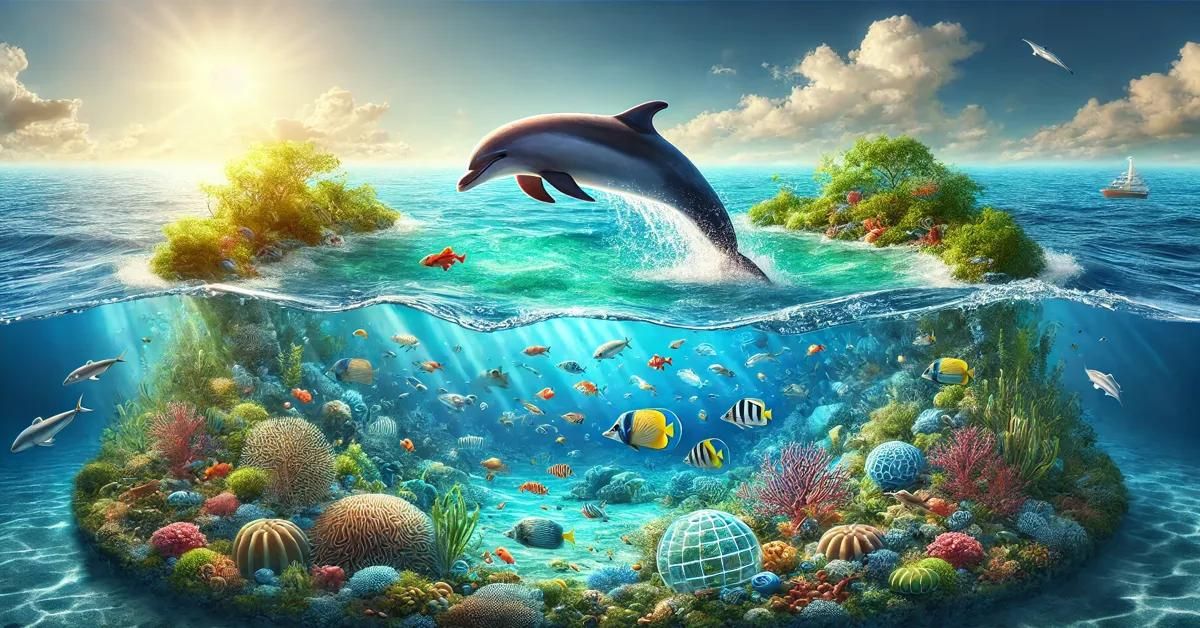Introduction
Dolphins are some of the most iconic marine animals, known for their intelligence, social behavior, and streamlined bodies. Among their most distinctive physical features is the dorsal fin, often referred to simply as the “dolphin fin.” This fin is more than just an aesthetic or identifying characteristic; it plays an essential role in a dolphin’s locomotion, thermoregulation, and survival in the wild. Understanding the dolphin fin from an ecological and environmental perspective sheds light on its significance in marine ecosystems and the broader environmental context in which dolphins live.
This article delves into the environmental niche of dolphins, with a special focus on the function, anatomy, and ecological importance of the dolphin fin. By examining how the fin contributes to a dolphin’s survival, we can better understand its role in marine food webs, its interactions with other species, and how human activities and climate change impact dolphins and their habitat.
1. Anatomy of the Dolphin Fin
The dolphin’s dorsal fin is one of its most recognizable features, but it is much more than a simple appendage. It has evolved to serve several critical functions that enhance a dolphin’s ability to thrive in marine environments.
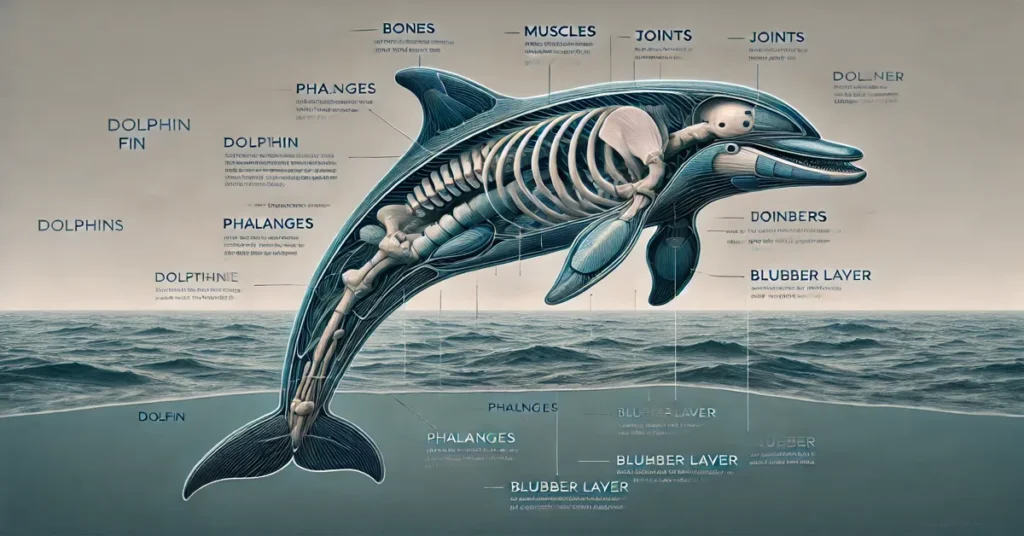
1.1. Structure and Composition of the Dolphin Fin
Dolphin fins, particularly the dorsal fin, are made of fibrous connective tissue and lack bones or cartilage, unlike the pectoral fins and flukes. The structure of the fin allows for flexibility while maintaining its functionality in water.
- Tissue Composition: The dorsal fin is composed of dense collagen fibers, which provide strength and durability. This connective tissue is highly resistant to tearing or damage, which is essential for withstanding the high speeds at which dolphins swim.
- No Bones or Cartilage: Unlike fish, which have bony fins supported by fin rays, dolphins’ fins are supported by fibrous tissues. This makes the fin more streamlined and flexible, allowing for efficient movement through the water.
1.2. Variations Among Dolphin Species
The size, shape, and appearance of the dorsal fin can vary significantly among dolphin species. These variations are adaptations to their environment, social structure, and lifestyle.
- Bottlenose Dolphins: Bottlenose dolphins, one of the most familiar species, have a tall, curved dorsal fin that aids in stabilization during swimming.
- Orcas (Killer Whales): Orcas, the largest members of the dolphin family, have a tall, triangular dorsal fin, which can reach up to six feet in height in males. This large fin helps orcas navigate cold waters by dissipating excess body heat.
- Spinner Dolphins: Spinner dolphins, known for their acrobatic displays, have a more slender dorsal fin. The fin’s streamlined design complements their ability to make sharp, agile turns and perform leaps.
2. Ecological Role of the Dolphin Fin
While the dolphin fin is a physical structure, its importance in the ecological functioning of dolphins cannot be understated. The fin contributes to the dolphin’s ability to move efficiently through the water, interact with its environment, and maintain a balanced internal body temperature.
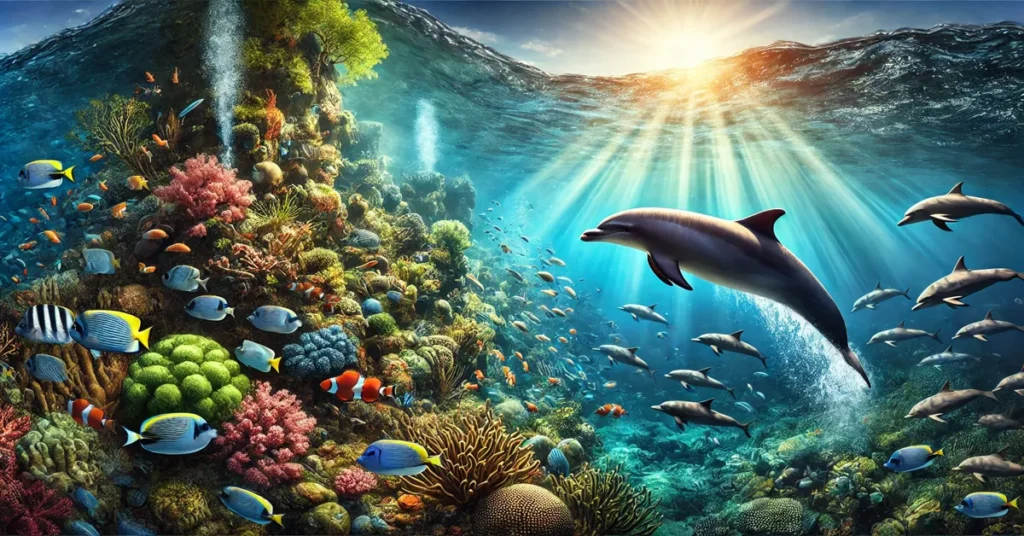
2.1. Role in Locomotion and Stability
One of the primary functions of the dolphin’s dorsal fin is to provide stability during swimming. Dolphins are fast, agile swimmers, reaching speeds of up to 20 miles per hour. The fin helps them maintain balance and direction, especially during high-speed chases or when making sharp turns.
- Stabilization: The dorsal fin acts as a keel, similar to the keel of a boat, which keeps the dolphin from rolling during swimming. This is especially important during fast movements and tight turns, where the fin helps to maintain the dolphin’s orientation.
- Reducing Drag: The streamlined shape of the dorsal fin minimizes drag as the dolphin moves through the water, allowing it to swim efficiently while conserving energy. This is crucial for hunting prey and evading predators.
2.2. Thermoregulation: A Critical Function
Dolphins are warm-blooded mammals that need to regulate their body temperature, especially in cooler ocean environments. The dolphin fin plays a vital role in thermoregulation, helping to maintain a stable internal temperature.
- Heat Dissipation: The dorsal fin contains a network of blood vessels known as a rete mirabile, which allows dolphins to dissipate excess body heat. As dolphins swim through cooler water, the rete mirabile circulates blood to the fin, where it is cooled before returning to the body.
- Adapting to Cold Waters: For species like orcas, which inhabit colder waters, the large surface area of the fin helps them release body heat, preventing overheating. This adaptation allows them to hunt in cold environments without suffering from thermal stress.
2.3. Communication and Social Interaction
Dolphins are highly social animals that rely on a variety of communication methods, including body language. The dorsal fin plays a role in non-verbal communication, signaling everything from dominance to submission.
- Visual Cues: The dorsal fin is often visible above the water’s surface, allowing dolphins to recognize each other at a distance. In social groups, the shape, size, and even nicks or scars on the fin can help dolphins identify individual members.
- Display of Dominance: In some species, like orcas, the size and posture of the dorsal fin are indicators of social rank. Males with large, upright dorsal fins are often dominant, while individuals with bent or collapsed fins may signal subordination or injury.
3. Dolphins in the Marine Ecosystem
Dolphins occupy an important ecological niche in marine ecosystems. They are apex predators in many regions and help regulate prey populations, contributing to the balance of the food web. The dolphin fin, while important for individual survival, also influences their role within the marine environment.
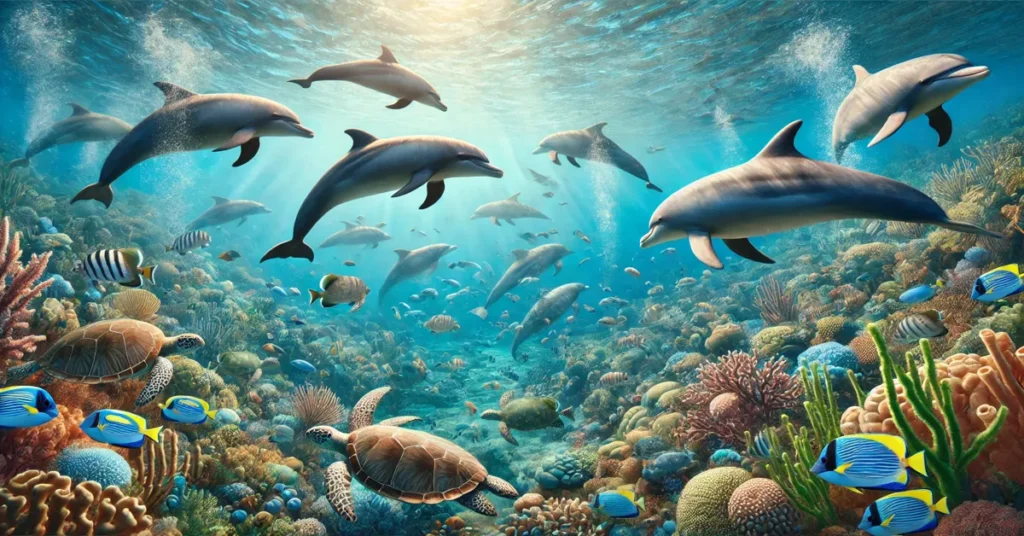
3.1. Apex Predators and Prey Regulation
As predators, dolphins play a critical role in controlling the populations of smaller fish, squid, and other marine organisms. By doing so, they prevent overpopulation and the depletion of resources, contributing to the stability of marine ecosystems.
- Prey Selection: Dolphins are opportunistic feeders and consume a variety of species, including fish, cephalopods, and crustaceans. The dolphin fin helps them navigate and hunt effectively, especially when herding schools of fish or pursuing fast-moving prey like squid.
- Hunting Techniques: Dolphins use sophisticated hunting techniques, such as herding fish into tight balls or using cooperative hunting strategies in pods. The dorsal fin provides stability and maneuverability, allowing dolphins to execute precise movements during hunts.
3.2. Interaction with Other Marine Species
Dolphins often interact with other marine species, both as competitors and symbiotic partners. Their presence in an ecosystem can influence the behavior and population dynamics of other species.
- Symbiotic Relationships: Dolphins are known to interact with seabirds, sharks, and other marine mammals in symbiotic relationships. For example, dolphins and seabirds often hunt in the same areas, taking advantage of the fish driven to the surface by the other. The visibility of the dolphin fin can signal to birds that dolphins are hunting nearby, prompting them to join the feeding frenzy.
- Predators of Dolphins: Although dolphins are apex predators, they can fall prey to larger marine animals like sharks and killer whales. The dorsal fin serves as a visible indicator when dolphins swim at the surface, making it easier for predators and prey to detect them.
3.3. Dolphins and Marine Food Webs
Dolphins contribute to marine food webs not only as predators but also as prey for larger species. Their interactions within the food web highlight their ecological importance.
- Trophic Level: Dolphins occupy a high trophic level, meaning they are close to the top of the food chain. As apex predators, they regulate populations of species lower on the food chain, preventing overpopulation and the depletion of key resources like fish stocks.
- Nutrient Cycling: Dolphins also contribute to nutrient cycling through their feeding behavior. By consuming prey and excreting waste, they help redistribute nutrients throughout the ocean, supporting the productivity of the marine ecosystem.
4. Threats to Dolphins and Their Habitat
Despite their crucial ecological role, dolphins face numerous threats from human activities and environmental changes. These threats not only impact dolphin populations but also disrupt the broader marine ecosystems in which they play a vital role.
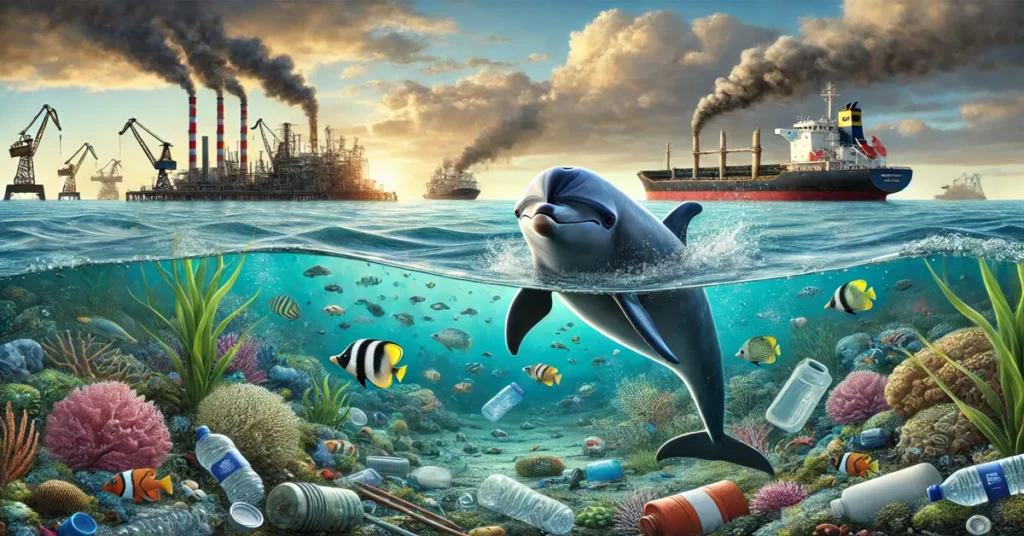
4.1. Habitat Destruction and Pollution
Human activities, such as coastal development, pollution, and industrial fishing, have a significant impact on dolphin habitats. The destruction of coastal ecosystems and contamination of the oceans pose serious risks to dolphin populations.
- Plastic Pollution: Dolphins are highly vulnerable to plastic pollution, which can lead to ingestion of debris or entanglement. The visibility of the dolphin fin at the surface often brings dolphins into contact with human-made pollutants, including discarded fishing gear and plastic waste.
- Oil Spills: Dolphins are also at risk from oil spills, which can contaminate their habitat and food sources. Oil spills reduce water quality and can cause skin irritations, respiratory issues, and even death in severe cases.
4.2. Overfishing and Resource Depletion
Overfishing is another major threat to dolphins, as it reduces the availability of their primary food sources. Dolphins rely on healthy fish populations to sustain their diets, and overfishing can disrupt this delicate balance.
- Decreased Prey Availability: The depletion of fish stocks due to overfishing means that dolphins have to expend more energy hunting for food. This can lead to malnutrition, weakened immune systems, and lower reproductive success.
- Bycatch: Dolphins are frequently caught as bycatch in commercial fishing operations, especially in trawling and gillnetting. Dolphins that become entangled in fishing gear often suffer injuries or drown if they cannot surface to breathe.
4.3. Climate Change
Climate change poses a profound threat to dolphin populations and the marine ecosystems they inhabit. Rising ocean temperatures, changing currents, and altered prey availability are some of the critical impacts of climate change on dolphins.
- Temperature Changes: As ocean temperatures rise, the distribution of marine species shifts. Dolphins may be forced to adapt to changing habitats and migrate to cooler waters. These migrations can disrupt their feeding patterns and breeding grounds, leading to decreased reproductive success.
- Impact on Prey Species: Many fish and squid species that dolphins rely on for food are sensitive to temperature changes. As these species migrate to cooler waters, dolphins may struggle to find sufficient food. This can lead to malnutrition and increased competition among dolphin populations.
4.4. Noise Pollution and Disturbance
Human activities that create noise pollution, such as shipping, oil exploration, and recreational boating, can interfere with dolphins’ communication and echolocation abilities.
- Echolocation Disruption: Dolphins use echolocation to navigate and hunt. Increased noise levels can mask the sounds dolphins rely on, making it difficult for them to locate prey or communicate with one another. This can lead to increased stress and changes in social dynamics within dolphin pods.
- Displacement: Loud noises from boats or industrial activities can drive dolphins away from important feeding or breeding areas. When dolphins are displaced from their preferred habitats, it can negatively impact their health and reproductive success.
5. Conservation Efforts for Dolphin Populations
Given the numerous threats facing dolphins, various conservation efforts have been initiated to protect these remarkable creatures and their habitats. These efforts aim to reduce human impact, promote healthy ecosystems, and ensure the long-term survival of dolphin populations.
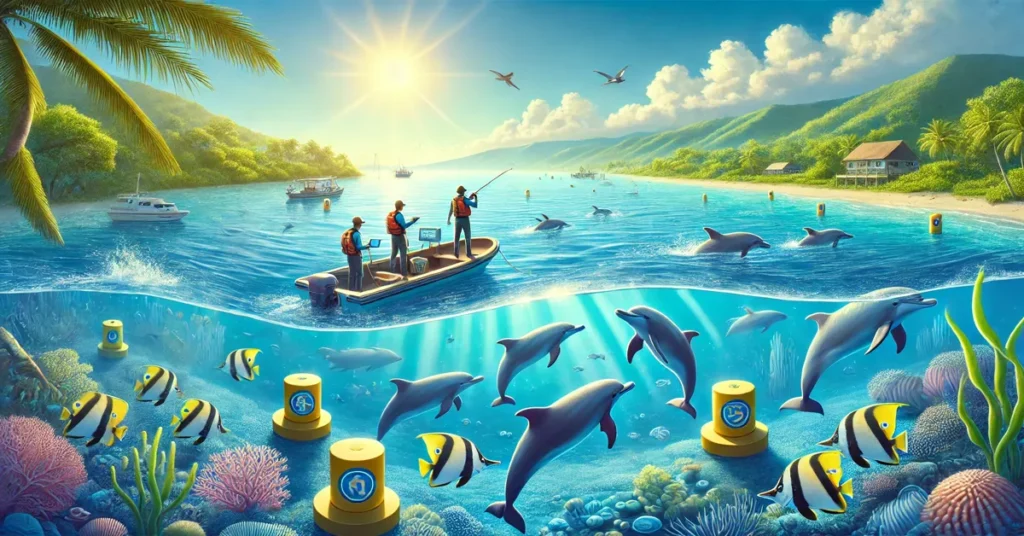
5.1. Legal Protections and Regulations
Many countries have implemented legal protections for dolphin populations, recognizing their ecological importance and the need for conservation.
- Marine Protected Areas (MPAs): MPAs are designated regions where human activities are regulated or restricted to protect marine ecosystems. Establishing MPAs can provide safe havens for dolphins, allowing them to thrive without the pressures of fishing, pollution, or habitat destruction.
- Endangered Species Act: In the United States, the Endangered Species Act provides legal protections for species at risk of extinction, including certain dolphin populations. This law helps ensure that conservation measures are put in place to protect these vulnerable species.
5.2. Research and Monitoring
Ongoing research and monitoring of dolphin populations are essential for understanding their behavior, habitat needs, and population dynamics. This information is critical for developing effective conservation strategies.
- Population Surveys: Researchers conduct population surveys using methods like aerial and boat-based surveys to estimate dolphin abundance and distribution. These surveys help identify critical habitats and inform management decisions.
- Tracking and Tagging: Scientists often use satellite tracking and tagging technologies to monitor dolphin movements and behaviors. This data can provide valuable insights into their migratory patterns, feeding habits, and social structures.
5.3. Community Engagement and Education
Community involvement is crucial for successful dolphin conservation efforts. Engaging local communities in conservation initiatives helps foster a sense of stewardship and awareness of the importance of protecting dolphins and their habitats.
- Public Awareness Campaigns: Educational programs that raise awareness about the threats dolphins face and the importance of conservation can encourage responsible behavior among tourists and local residents. Initiatives that promote eco-friendly practices, such as responsible boating and waste disposal, can help reduce human impact on dolphin habitats.
- Citizen Science Projects: Involving the public in citizen science initiatives, such as dolphin spotting or monitoring local waterways for pollution, empowers communities to take an active role in conservation. These projects can also help gather valuable data for researchers.
6. The Role of Dolphin Fin in Conservation
The dorsal fin of a dolphin is not just an anatomical feature; it is also a symbol of the challenges and triumphs of marine conservation efforts. By focusing on the fin’s significance, we can highlight the need for continued protection and support for dolphin populations.
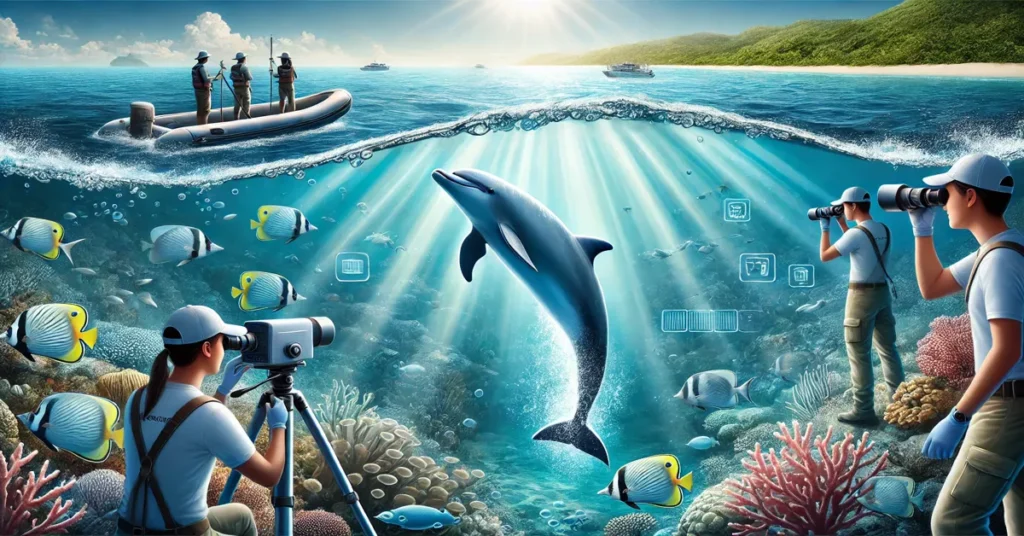
6.1. Identification and Monitoring
The unique characteristics of dolphin fins, such as size, shape, and markings, allow researchers to identify individual dolphins and track their movements over time. This information is crucial for monitoring population health and understanding social structures within pods.
- Photo Identification: Researchers often use photo identification techniques to catalog dolphin populations. By taking photographs of the dorsal fins, scientists can create databases that allow them to recognize individual dolphins and monitor their movements and health.
- Understanding Social Structures: Studying the dorsal fins of dolphins helps researchers understand the social dynamics within pods. Observing interactions among dolphins can provide insights into their behaviors, breeding patterns, and overall health.
6.2. Symbol of Awareness and Advocacy
The dorsal fin has become a symbol of marine conservation, representing the challenges dolphins face and the importance of protecting marine ecosystems.
- Advocacy and Activism: Organizations dedicated to dolphin conservation often use images of dolphins and their dorsal fins in their campaigns. These visuals can evoke emotional responses and raise awareness about the threats dolphins encounter, encouraging public support for conservation efforts.
- Cultural Significance: In many cultures, dolphins hold significant symbolic meaning. They are often seen as messengers of the sea and are celebrated in various forms of art and literature. Promoting awareness about the ecological roles of dolphins can help strengthen cultural connections to marine conservation.
7. Future Considerations for Dolphin Conservation
Looking ahead, several considerations must be addressed to ensure the survival of dolphins and the health of their marine ecosystems.
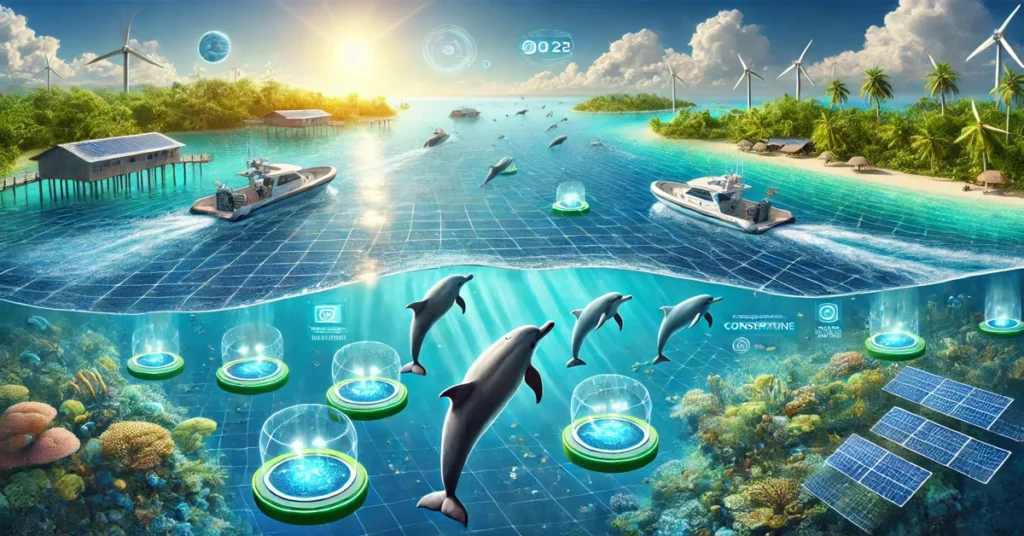
7.1. Climate Resilience Strategies
As climate change continues to impact marine environments, developing climate resilience strategies for dolphin populations will be critical.
- Adaptive Management Plans: Conservation organizations and governments should create adaptive management plans that account for the potential impacts of climate change on dolphin habitats and prey availability. These plans may involve establishing new protected areas or modifying existing regulations to better protect dolphins.
- Restoration Projects: Habitat restoration projects aimed at improving water quality, protecting coral reefs, and restoring coastal ecosystems can enhance the resilience of marine environments. Healthier ecosystems are better able to support dolphin populations and other marine life.
7.2. Collaborative Conservation Efforts
Collaboration among various stakeholders, including governments, non-profit organizations, local communities, and researchers, is essential for successful dolphin conservation.
- Cross-Agency Coordination: Coordinated efforts between different government agencies can lead to more effective conservation strategies. Collaboration can streamline regulations, share resources, and enhance the implementation of conservation initiatives.
- Partnerships with Indigenous Communities: Working with Indigenous communities that have deep connections to marine ecosystems can enhance conservation efforts. Incorporating traditional ecological knowledge into conservation practices can provide valuable insights and promote sustainable management of dolphin habitats.
7.3. Research and Innovation
Investing in research and innovation is crucial for understanding the complex dynamics of dolphin populations and their ecosystems.
- Technological Advancements: Continued advancements in technology, such as drone surveillance, remote sensing, and underwater acoustics, can improve research methodologies. These tools can provide new ways to monitor dolphin populations and gather data on their behaviors and habitats.
- Long-term Studies: Long-term ecological studies are essential for tracking changes in dolphin populations and marine environments. Research that spans multiple years can reveal trends, assess the effectiveness of conservation efforts, and inform future strategies.
Conclusion: The Importance of Protecting Dolphin Fin and Its Ecosystem
The dolphin fin is more than just a physical feature; it is an essential component of a dolphin’s survival and a vital part of marine ecosystems. Understanding the ecological roles of the dolphin fin and the challenges dolphins face in a rapidly changing environment is critical for their conservation.
As we move forward, it is imperative that we prioritize the protection of dolphins and their habitats. Through collaborative efforts, innovative research, and public awareness initiatives, we can help ensure that dolphin populations continue to thrive in our oceans. By recognizing the significance of the dolphin fin, we can inspire a deeper appreciation for these remarkable creatures and the intricate ecosystems they inhabit, fostering a commitment to marine conservation for generations to come.
Read More: Taimai Turtle: Understad its Ecological Role, and Conservation Efforts

